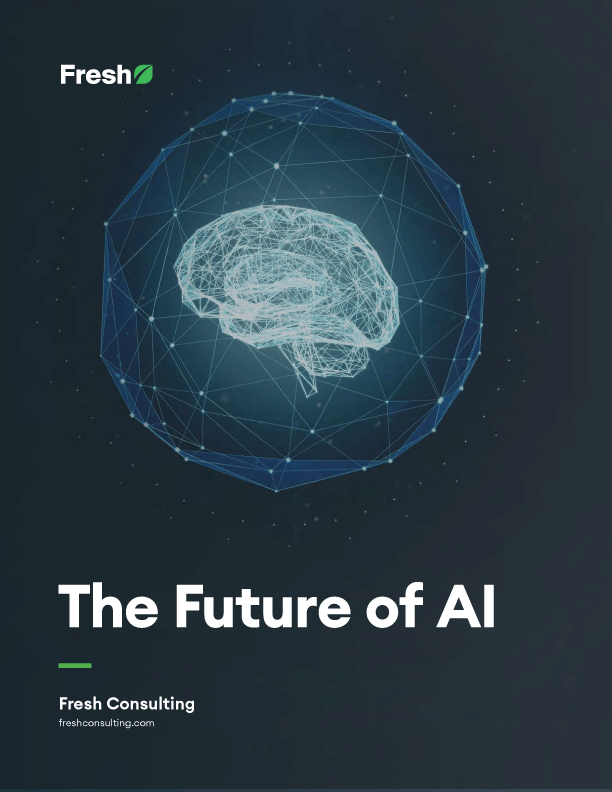Article
Eight Ways Chatbots Can Improve Your Business Workflows

The main function of chatbots is communication, but their usefulness isn’t confined to customer support tickets.
Chatbots can also be used to streamline communication, inside and outside of customer service. With the right tools and development teams, chatbots can be designed to fill many different roles beyond their current function.
Chatbots can help facilitate production in each of these areas.
1. Customer Experience
More exploration of how chatbots can improve CX (customer experience) is warranted. Many businesses make use of chatbots to provide always-on customer service. Chatbots are especially efficient, with the capability to run 24/7. Chatbots also act in predictable ways, providing added consistency, dependability, and decreased chance for human error. Lastly, chatbots can respond faster than a human operator to common queries. But outside of traditional customer service, there is ample opportunity to integrate chatbots across all of a brand’s various touchpoints.
2. Order Processing
Many businesses (especially restaurants) now streamline the ordering process by providing a chatbot service to order and track deliveries. A good example of this service is the Domino’s pizza ordering chatbot, which allows users to order pizza through a low-level chatbot in Facebook Messenger. Ordering chatbots can answer common questions about the restaurant, such as hours of operation and menu specials. They can also take orders, accept payments, make reservations, and provide real-time updates on order statuses.
3. Marketing and Online Shopping Personalization
Chatbots play an important role in online shopping. Not only do chatbots provide general customer support, but they can also “learn” about individual shoppers and use those learnings to customize the shopping experience. After answering some basic questions from the chatbot, recommended products are provided based on the shopper’s preferences. As shoppers continue to browse, the chatbot can continue providing additional details about products. The chatbot can later send users recommendations and advertisements via email and other messaging apps based on previous purchasing behavior. Chatbots allow businesses to sell more of their goods and help users find new products, carrying significant ROI for all.
4. Virtual Assistants
Virtual Assistants (also called AI Assistants) can be asked questions about almost any topic, and then, by querying the internet or a built-in database, they provide a comprehensive answer or perform a task. Virtual Assistants are also connected to smart tech ecosystems and other IoT services, making them relevant for everything from checking bank account balances to running household appliances. Virtual Assistants can be built to address a variety of concerns, and they can have broad or specific purposes.
5. Inventory Tracking and Management
Inventory and supply chain management is a time-consuming process that chatbots can automate. Chatbots can provide an “interface” (activated via speech, rather than traditional input methods like a keyboard and mouse) that makes manual spreadsheets less of a necessity. Chatbots can answer simple questions, such as how many shipments are due on a particular day or how much of a certain product is stored in a particular warehouse. Additionally, while human error is common when dealing with complex data like inventory barcodes, the chatbot will always provide accurate information. Chatbots work quickly and can be used for time-sensitive tasks, such as making real-time changes to deliveries before they leave the warehouse.
6. Human Resources
Chatbots are being integrated into HR departments as well. In particular, chatbots provide a powerful tool to streamline the onboarding and integration process for new and temporary employees. A chatbot can serve as an “interactive FAQ” for new employees, giving them a tool for getting quick answers to basic questions about the company and its policies. These chatbots not only reduce barriers between new employees and productive workflows, but they also free up HR employees for more complex tasks. Once integrated into the workforce, chatbots also provide an automated means of checking in on new employees to gauge their level of engagement and job satisfaction.
7. Travel Planning
Creating travel plans and making logistical arrangements is a complicated process that can be simplified greatly using chatbots. Chatbots work akin to a travel agent and provide a valuable tool from start to finish in planning personal or business travel. Users can interact with the chatbot to make decisions on where to travel by answering simple questions about what they want to do on their trip. The chatbot can then make suggestions about flights, lodging, and other accommodations. Once the chatbot guides users through planning a travel itinerary, the chatbot can actually book flights, hotels, and rental cars. The chatbot can also schedule the trip’s events and offer the traveler package deals or coupons.
8. Financial Management
Chatbots can be used for financial services, such as providing accurate and immediate information about a user’s financial assets. A chatbot can also be used to make deposits, withdrawals, and transfers between a user’s various accounts. Using AI and Deep Learning, financial management chatbots can also provide more advanced services to aid in decision making.
For example, a chatbot could provide information on a stock’s value over time and make predictions about its future worth. Chatbots can also be used to predict the future balance of a savings account based on the current balance and APR. Additionally, chatbots can track information on a user’s spending habits and make recommendations for saving.








